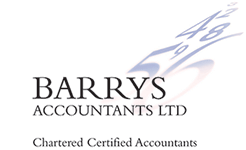Company income sharing for couples
You’re getting married soon and to save tax you want your partner to receive a share of the dividends from your company. Should you transfer some of your shares or should your company issue your partner with new shares?

Tax saving
After losing a long battle through the courts in 2007 HMRC was forced to accept that a couple can share dividends from a company, even if one of them does not generate income for it and the purpose is solely to reduce income tax. The simple example below shows how worthwhile this arrangement can be and why HMRC fought to block it.
Example.Sam and Lisa are married. Sam is an IT systems designer who, with his employees, provides his services through a company. The company’s after-tax profits in its last financial year were £120,000. Currently Lisa doesn’t work. If Sam owned all the shares in the company and took all its profits as dividends, he would pay income tax of £39,432. However, if Sam and Lisa owned 50% of the shares each and took all the profits via dividends, their joint tax bill would be £22,864 - a saving of £16,568.
The allocation of shares doesn’t have to be 50/50 as in our example. You can divide the shares how you like to achieve maximum tax efficiency.
Transfer shares or issue new ones?
For tax planning purposes it makes no difference whether you transfer shares or issue new ones. In our example, where Sam is the sole shareholder in his company, he could give Lisa half of his shares (or whatever proportion he wants) or arrange for his company to issue new shares. The outcome will be the same.
Where, as in our example, the company has been trading for some time it’s simpler for Sam to gift some of his shares to his partner. He should wait until they are married to do this so that the special rules for gifts between married couples apply to prevent the shares being liable for capital gains tax.
Increasing tax efficiency
Sam and Lisa’s individual financial positions might change year to year making a 50/50 split of dividend income less efficient than if they owned the company’s shares in different proportions. It would be impractical for them to transfer shares back and forth frequently between each other to improve tax efficiency.
.Once Sam and Lisa own the ordinary shares in the company, preferably 50/50, it can issue further shares to each of them so the company can pay different amounts of dividends to each of them depending on their respective financial positions and to maximise tax efficiency.
Alphabet shares
The shares should be additional ordinary shares with identical rights to income and capital but of different classes. For example, Ordinary A shares for Sam and Ordinary B shares for Lisa. For obvious reasons these are often referred to as alphabet shares. Sam and Lisa could do this themselves but as neither is proficient in tax or the company law requirement for issuing shares it would be wise for them to ask an accountant to handle it.
Related Topics
-
Electronic VAT return and payment due
-
HMRC checks directors’ loans are paid up
HMRC is writing to agents to check corporation tax returns for previous years are correct as it used to be possible to add a future date for an anticipated loan repayment. What’s the issue and what should you do if your advisor receives a letter?
-
Working from home tax relief scrapped in Budget
Employees who are required to work from home are currently able to claim tax relief at a flat rate of £6 per week. That's changing from 6 April 2026. What's the full story?



 This website uses both its own and third-party cookies to analyze our services and navigation on our website in order to improve its contents (analytical purposes: measure visits and sources of web traffic). The legal basis is the consent of the user, except in the case of basic cookies, which are essential to navigate this website.
This website uses both its own and third-party cookies to analyze our services and navigation on our website in order to improve its contents (analytical purposes: measure visits and sources of web traffic). The legal basis is the consent of the user, except in the case of basic cookies, which are essential to navigate this website.